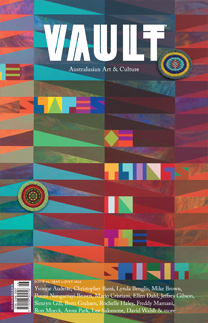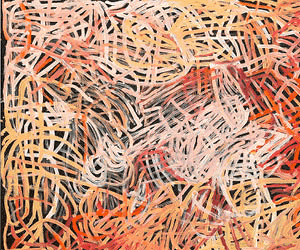Michael Parekowhai
Playing it Forward
Michael Parekowhai’s larger-than-life sculptures and immersive neon installations act as looking glasses that challenge our ways of seeing, playing and being.
Michael Parekowhai represented New Zealand at the 2011 Venice Biennale. He also recently completed, as he put it, “one of the biggest shows I’ve ever tried to get my head around” - The Promised Land at the Gallery of Modern Art in Queensland (GoMA). Curated by Maud Page and featuring a catalogue essay by Thomas Sokolowski, former director of the Andy Warhol Museum in Pittsburgh, the exhibition covered the breadth of the artist’s sculptural practice, which mixes racial identity and a sense of place with humour and keenly crafted moments of anticipation. VAULT sat down with Parekowhai to speak about artistic gestation, his fascination with neon and the power of play.
Tell me about your installation at the 2011 Venice Biennale – story of a New Zealand river. I heard it took ten years to create and was the sixth of your piano sculptures?
The carved red piano He Ko-rero Pu-ra-kau mo Te Awanui o Te Motu: story of a New Zealand river (2011) is the third sculpture I’ve produced that uses a piano. The other two are The Horn of Africa (2006), which is at GoMA in Queensland, and The Story of a New Zealand River (2001), which is at Auckland Art Gallery Toi o Ta-maki. The three works are part of a larger series of works named The Story of a New Zealand River and reference Jane Campion’s great film The Piano. I originally envisaged there would be around 11 in total. I might not get there. The carved red piano did take ... Subscribe to read this article in full
























